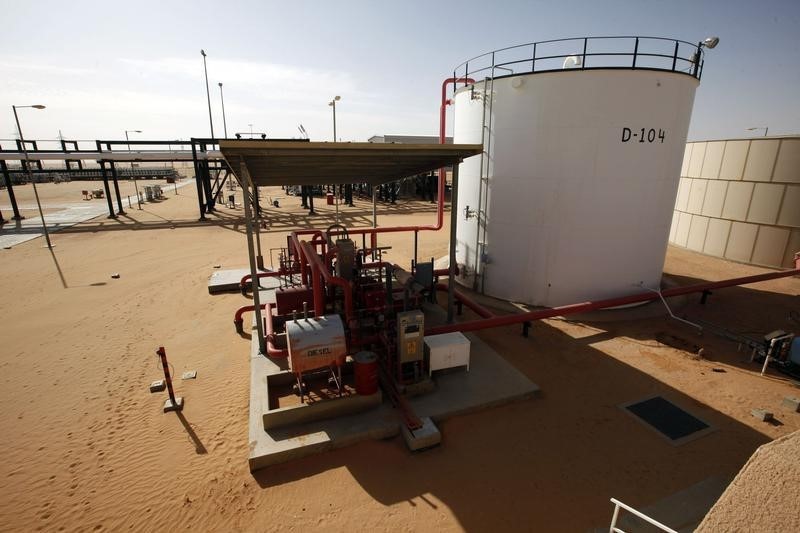Investing.com - Crude oil futures fell to multi-month lows on Monday, as ongoing worries over a global supply glut drove down prices.
On the ICE Futures Exchange in London, Brent oil for September delivery hit a session low of $51.11 a barrel, a level not seen since January 30, before trading at $51.27 during European morning hours, down 94 cents, or 1.8%.
On Friday, London-traded Brent futures lost $1.10, or 2.06%, to end at $52.21. London-traded Brent futures dropped $2.24, or 4.41%, last week, the fifth straight weekly decline.
Prices tumbled $11.39, or 18.6%, in July, amid concerns a resumption of Iranian oil exports will add to a global glut.
Iran and six world powers reached a long-awaited nuclear deal in July that would end sanctions on Tehran in exchange for curbs on the country's disputed nuclear program. Iran reportedly hoards 30 million barrels of oil in its reserves ready for export.
Reports of record high oil exports from Iraq and robust production from Saudi Arabia also contributed to losses.
Global oil production is outpacing demand following a boom in U.S. shale oil production and after a decision by the Organization of Petroleum Exporting Countries last year not to cut production.
Elsewhere, U.S. oil futures fell to the lowest level in more than four months, as ongoing worries over high domestic U.S. oil production weighed.
Crude oil for delivery in September on the New York Mercantile Exchange hit an intraday low of $46.38 a barrel, the weakest level since March 23, before trading $46.45, down 66 cents, or 1.4%.
On Friday, Nymex oil futures slumped $1.40, or 2.89%, to close at $47.12. New York-traded oil futures declined 88 cents, or 2.12%, last week, the seventh consecutive weekly loss.
Nymex oil prices plunged $12.22, or 21.24%, in July, the biggest monthly loss since October 2008.
Industry research group Baker Hughes (NYSE:BHI) said Friday that the number of rigs drilling for oil in the U.S. increased by five last week to 664, the second straight weekly gain.
Meanwhile, the spread between the Brent and the WTI crude contracts stood at $4.82 a barrel, compared to $5.09 by close of trade on Friday.
A pair of disappointing manufacturing reports underlined concerns over the health of China's manufacturing sector.
The Caixin/Markit manufacturing purchasing managers’ index for July released on Monday fell to 47.8 from a preliminary reading of 48.2. It was the lowest reading since July 2013.
Meanwhile, the official China's manufacturing purchasing managers' index published on Saturday dipped to 50.0 last month from 50.2 in June, as new orders declined.
China is the world’s second-largest oil consuming nation and manufacturing numbers are used as indicators for fuel demand growth.
Investors looked ahead to the release of key data later in the session for further indications over the timing of a U.S. rate increase and the strength of the economy.
The Institute of Supply Management was to release data on manufacturing activity for July later Monday. Market players are also focusing on Friday's nonfarm payrolls report.
The U.S. dollar index, which measures the greenback’s strength against a trade-weighted basket of six major currencies, was at 97.34.
The greenback has been well-supported in recent weeks amid speculation the Federal Reserve was on track to raise interest rates in September.
